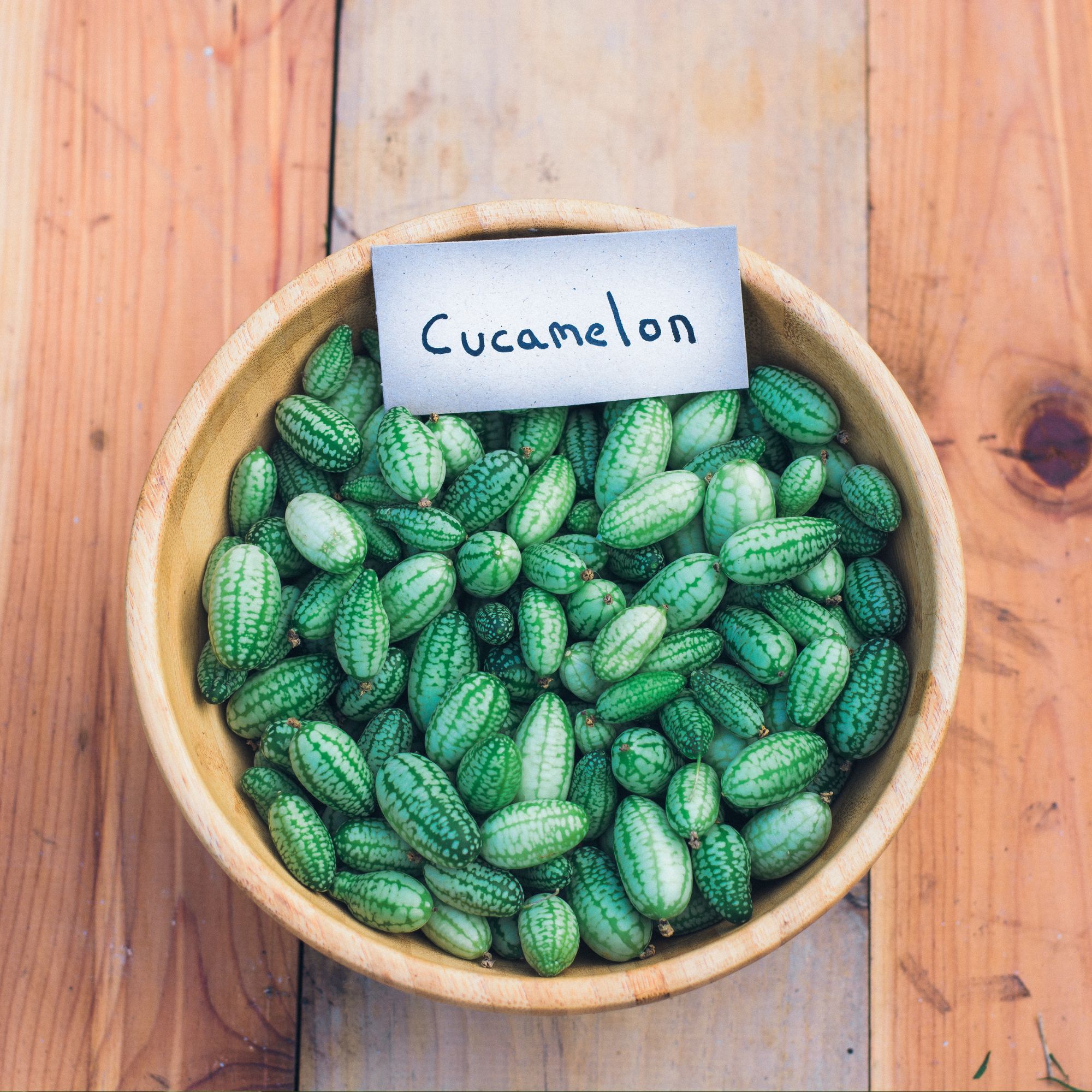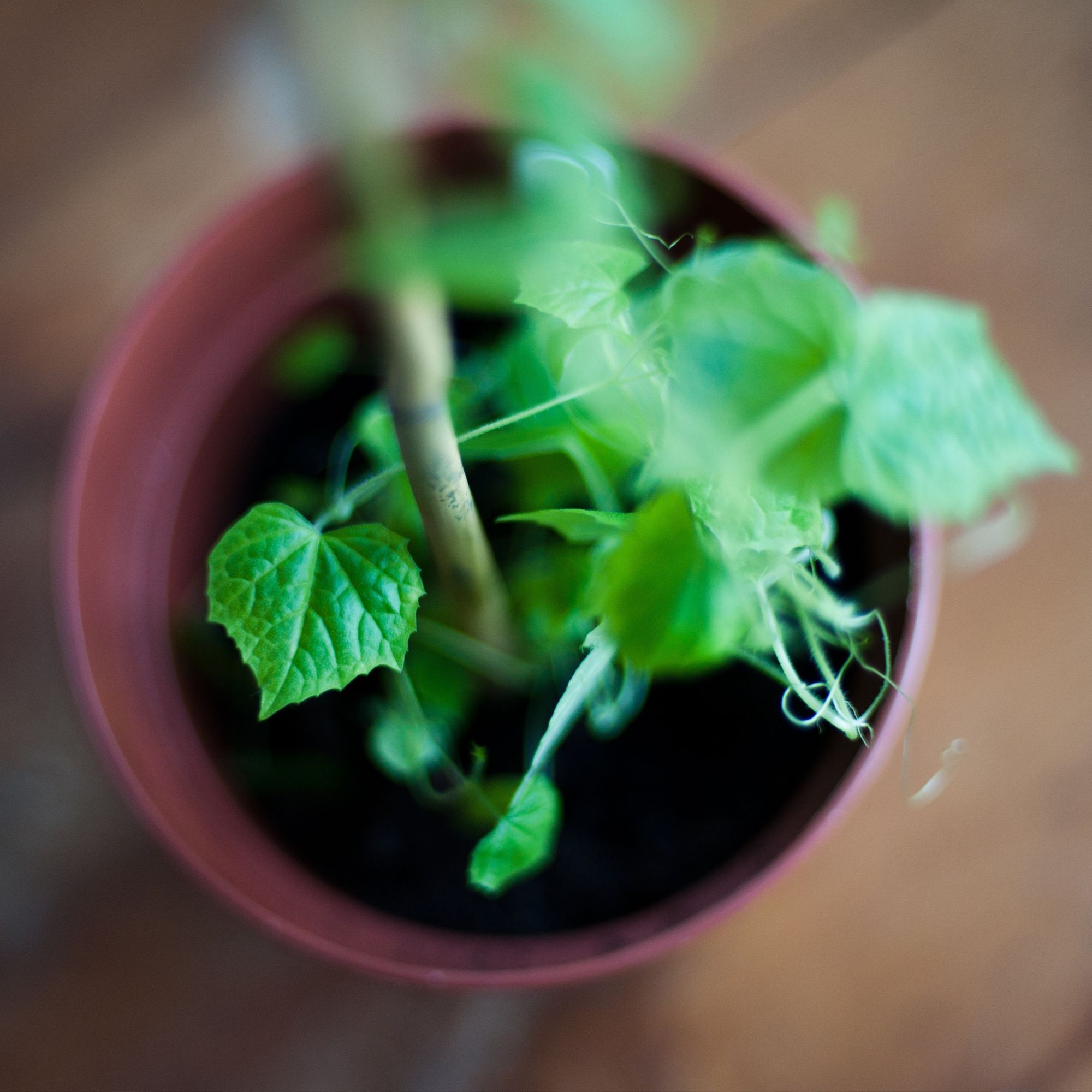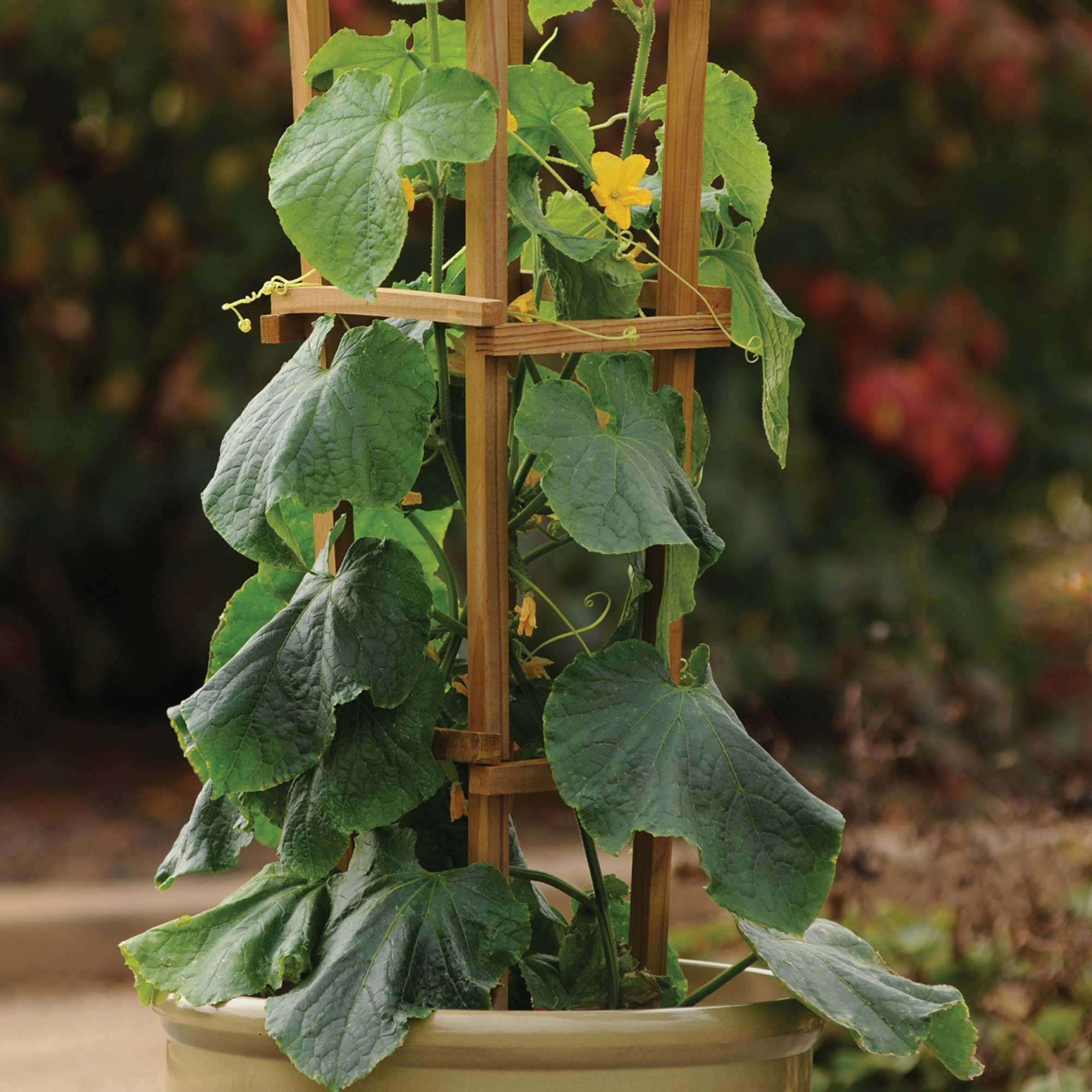
Busy wondering how to grow cucamelons from seed? Of course you are: social media has made it abundantly clear that the so-called Mexican miniature watermelon is big news. Big. Huge.
It's ironic, really, when you consider how absolutely tiny these exotic fruits are. Still, it's easy to see the appeal: they're ridiculously cute, for starters – and one of the easiest GYO garden ideas for beginners, too.
Throw in the fact that they can be used to make a seriously mean cocktail (among other things), and you have one of the best garden trends to ever grace TikTok.
How to grow cucamelons from seed
'Cucamelons, with their strange little watermelon-like appearance, have definitely caught the attention of growers, and for good reason,' says Joseph Clark (as in, yes, he of @JoesGarden fame!).

'As a general rule it is good to grow crops you either can’t find in the supermarket, or that are too expensive to buy in the supermarket,' continues Joseph.
'Cucamelons fit the bill perfectly: they are virtually impossible to find in the stores, and when you can find them, you need to take a out a small mortgage to buy them.
'Honestly, the last time I saw cucamelons in the shop, one tiny punnet was £7.50!'
Dan Ryan, the parks and garden manager at Gatton Park, agrees, adding, 'These fruits are really fun to grow (and eat) so it’s no surprise they have been gaining popularity here in the UK for the last few years.'
An added bonus? These deliciously moreish fruits are incredibly easy to grow, too.
'Just a few small plants will provide you with a bountiful harvest,' promises Joseph. 'For around £3 you can buy a packet of seeds which will easily provide you with 15 or so plants, each giving you upwards of 50 cucamelons!'
This means, basically, that even if you're the very greenest of beginners trying to learn how to grow your own vegetables, fruit and herbs at home, you ought to at least take a glance at our step-by-step guide on how to grow a cucamelon from seed. You won't regret it...
What you will need

To grow cucamelons from seed, you will need the following:
- Cucamelon seeds (obviously)
- A seed tray with good drainage holes in the bottom
- A good quality peat-free compost
- A selection of 5-inch pots (and bigger 30-litre pots, if you're working with a container garden)
- Bamboo canes
- A liquid fertiliser, such as this Liquid Seaweed from Amazon
- A little patience (not available in stores)
If you want to grow cucamelons this summer, it’s not too late.
'You can try to get some ready-started seedlings from your local nursery or online to catch up,' says Dan.
Step-by-step guide
Whether you've dabbled in growing your own edimentals before or not, we promise this one is going to be a walk in the park (or the vegetable garden, as it were).
Let's get started, shall we?
1. Plant your seeds

Just as you might expect from one of Mexico's native plants, cucamelons (or 'mouse melons') like to be kept warm and snug.
'Cucamelons will need a warm temperature of around 22°C to germinate from seed,' says Joseph. 'As a result I like to start my seeds off indoors on a sunny windowsill. In the south of the UK this can be done in March, but if you are further north I would wait until April.'
Dan adds: 'Plant your seeds about 1cm deep in a peat-free compost, and place on a warm windowsill – or, even better, a heated propagation tray. The seeds need 20-25°C to germinate and should sprout in about 2 weeks.'
No seed tray? No problem! 'An old plastic fruit punnet or cookie box with holes poked in the bottom is perfect,' promises Joe reassuringly.
2. Wait for your cucamelons to sprout

As already mentioned, cucamelons won't take long to sprout – at all – so you will want to keep a close eye on them over the next 10-15 days or so.
'Make sure you are growing them in a nice sunny position to prevent them from becoming tall and leggy, and don’t let the soil dry out,' says Joseph, cautioning against overwatering.
3. Plant them in individual pots

Repotting time comes hand-in-hand with a more established seedling. Or, as Dan says, 'once your cucamelon sprouts have a good couple of leaves or so, it's time to pop them into individual pots.'
If you are feeling nervous about removing your baby cucamelons from their seed tray, Joseph suggests using a fork or teaspoon to gently ease them out, keeping as much soil as possible around the roots.
'Plant them in a good multi-purpose peat free compost, water them well, and leave them in a warm sunny spot. If all risk of frost for your area has passed, they will be OK outside,' he says.
4. Transplant your cucamelons

I know, I know. But, while it might sound like these cucamelons are getting a little big for their roots (see what I did there?), giving them more room to grow is guaranteed to help them thrive.
'When your cucamelons are around 10 inches tall, it's time to move them,' says Joseph. 'Personally, I like to grow mine in large pots, normally at least 30 litres in volume.
'I plant 5 or 6 plants per pot and trail them up bamboo canes, using a soft twine to secure them as they are delicate little vines.'
Of course, you don't have to use containers, as cucamelons are also one to add to your list of garden border ideas, too – just make sure all risk of frost has passed.
'If you are planting cucamelons out in your garden, find them a nice sunny spot and make sure they sit 40-50cm apart,' says Dan.
'A few bamboo canes work great, as you can tie in the stems or a little metal grate or mesh works nicely too for the plants to clamber up – although if you have the space you can let them crawl across the ground.'
He adds: 'In my opinion, though, growing them upwards tends to keep them happy –and makes it easier to harvest your fruit.'
5. Watch out for those yellow flowers

Every fruit and vegetable has a 'flower moment', and the cucamelon is no different: in fact, its pretty yellow blooms are almost as pleasing on the eye as those grape-sized fruits themselves. Almost.
'It's exciting when those little yellow flowers appear, as these will become your cucamelons!' says Joseph. 'At this stage, it is a good idea to feed your plants with a liquid feed. I like to use homemade nettle fertiliser, but liquid seaweed from the store works well, too.'
Dan takes a slightly different approach with his own cucamelons, noting that he prefers to 'give the plants a liquid feed of high potash fertiliser once a week'.
6. Harvest your cucamelons

... and now comes the most important part in this growing process: harvesting your own cucamelon crop.
'You want to start to pick the fruit once they are the size of a grape or olive,' says Dan. 'And don't worry about taking too much: as you pick them, it stimulates the plant to continue flowering and produce more fruit, so you should keep harvesting until early autumn.'
And just like that, this writer was inspired to pop to the shops and buy herself a packet of cucamelon seeds (or five). Wish me luck.
FAQs
Can you grow cucamelons in the UK?
Cucamelons have been steadily gaining in popularity as a grow-your-own option, partly because they have become the darlings of the fruit and veg scene on social media. While they look like they should be tricky to grow, though, Joseph promises that nothing could be further from the truth.
'Cucamelons are actually very easy to grow, even in our UK climate,' he says, 'and just a few small plants will provide you with a bountiful harvest.'
Are cucamelons an annual or a perennial?
Cucamelons like to straddle the line between being an annual and perennial plant. 'Technically the plants are perennial, which means you can grow them year on year,' says Dan, 'but most people grow them as annuals.'
He adds: 'If you are up for the challenge, cut all the growth back to the ground at the end of the year, and keep the plants frost free in a greenhouse or even a garage over the winter. The tuberous roots stores the energy it needs and you can plant them again the next spring.'
Are cucamelons easy to grow?
Cucamelons are a beautifully low-maintenance plant, making them the ideal GYO option for beginners/unwitting plant killers.
'Just make sure your cucamelons are well watered, and are growing in a warm sunny spot in the garden, and soon you will be picking basket after basket of cucamelons all throughout August and September!' says Joseph.
What do cucamelons taste like?
Ah, the million dollar question: what do cucamelons taste like? Really?
'Cucamelons are a curious little fruit about the size and shape of a grape, but taste like a cucumber... with a hint of lime,' muses Dan. This writer, meanwhile, is convinced they taste like a citrussy watermelon-cucumber hybrid.
'Cucamelons have a unique taste, but it is hard to describe and pinpoint what that taste is,' says Joseph. 'Honestly, if you ask 15 different growers what they taste like, I would confidently bet you will get 15 different answers.'
He adds: 'I believe that is what makes them unique, and such a hit with the GYO community. There is something fun about growing something quite exotic and exclusive, compared to just another bowl of broad beans like everyone else down the allotment.'







